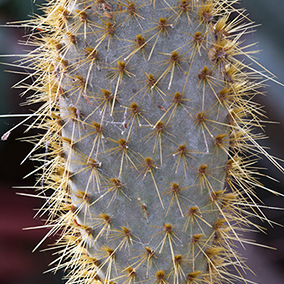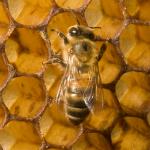
Cactuses

Plants


Some Endangered
facts

The cardón is the tallest cactus. The smallest kind of cactus is only about an inch tall.

Cactuses typically grow in deserts and semi-desert regions. A few live in rainforests.
description
Picture a cowboy…
If you were to close your eyes and picture a cowboy, chances are good that there's a cactus in that picture, too. The southwestern US and Mexico are hot spots for cactus biodiversity. That means that lots of different kinds of cactuses live there. It might look like cactuses don't have leaves, but the spines are modified leaves. Spines also help to shade the stem and collect moisture from dew or fog. Those sharp spines protect the plant from most plant-eaters. Somehow, rodents, woodpeckers, and peccaries manage to snack on cactus stems.
Rooty-toot-toot
Most cactus roots spread out and grow close to the surface. That helps them quickly soak up even tiny amounts of rain. When the soil gets wet, these shallow roots sprouts “rain roots.” When the soil dries up, so do the teeny rain roots. Very tall cactuses grow deep roots to anchor them in place.
In full bloom
Cactus flowers bloom during the rainy season. They are big and beautiful, but they last only a few days. Some bloom at night. Moths and bats pollinate night-blooming cactuses. Bees, beetles, and birds are important daytime pollinators. Cactuses produce pulpy fruit with lots of small seeds. Many animals find these fruits tasty, and the seeds come out in their poop. In some cases, that plants a new cactus.
I’ll have mine without spines
Some cactuses make good houseplants, or plants for your yard. There are other uses too. You can eat some of them. People de-spine the flattened pads of a cactus and put it in salads, soups, tacos, and entrees. Did you know that dragonfruit comes from cactus? Certain other cactus fruits taste good raw or in candy, preserves, and syrups.
In danger
More than 400 kinds of cactuses are threatened, and nearly 100 of those are critically endangered. Many of them are protected. But people break the law. Illegally taking and selling live plants (and animals), or parts of them, is called “wildlife trafficking.” It’s a big problem for many cactuses. Smugglers dig them up to sell them. In some protected areas, rangers tag cactus plants the way people microchip their pets. That keeps some would-be thieves from stealing the tagged cactus plants. Make sure that plants you buy come from growers that follow wildlife laws.












